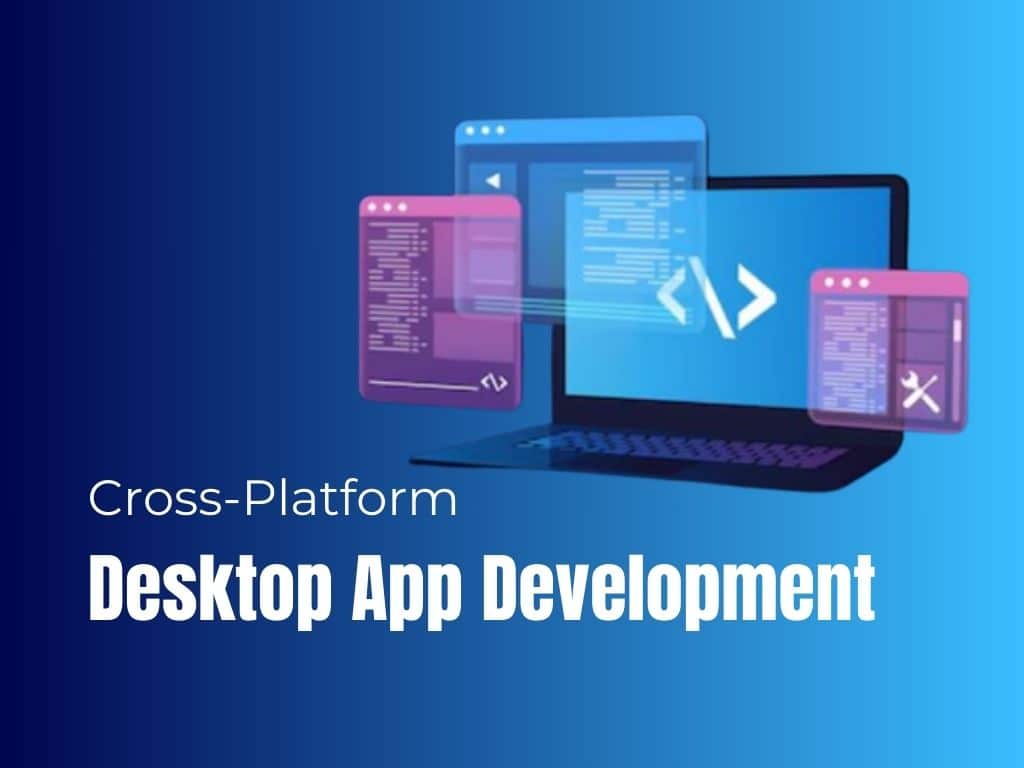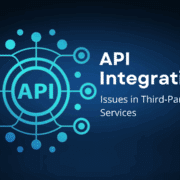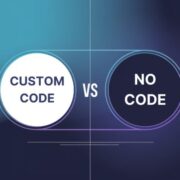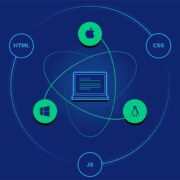Cross-Platform Desktop App Development With Alternatives
Have you ever noticed that the most popular software and games are easily available across different platforms? Whether it is Windows, MacOS, or any other, you can find the same application ready to use on every platform.
The secret behind this that most businesses prefer in today’s fast-paced digital age is cross-platform desktop app development.
As the demand for feature-rich and efficient desktop applications rises, businesses look towards cross-platform app development for creating desktop applications that are up to par and work smoothly on every platform. Cross-platform app development is a comprehensive solution for businesses to attract as many users as possible from multiple platforms while saving cost, time, and resources.
This blog is all about cross platform desktop application development and the benefits it offers for businesses. You will find some of the best frameworks available along with some alternatives for cross-platform desktop application development.
What is Cross Platform Desktop App Development?
Cross platform desktop app development refers to the practice of developing applications that can run on multiple operating systems seamlessly without the need to change the code base significantly. It means that the developers don’t need to write separate codes for different platforms such as Windows, MacOS, and others.
In cross-platform desktop application development, a single code acts as the foundation for the application. And with some slight changes, it can be made compatible with any platform. To achieve this, specific frameworks and technologies are used that can abstract OS-specific functionalities.
Benefits of Cross Platform Desktop App Development
The reason behind the rising popularity of cross platform desktop application development is the benefits that it offers over other app development practices. Here are some of the key benefits of cross platform desktop app development:
Wider application reach
The more platforms your desktop application runs on, the wider your user reach. Cross platform app development makes this possible by allowing businesses to efficiently develop applications that are ready for every platform from day one.
Cost-efficiency
With cross-platform app development, businesses don’t have to practice end-to-end development for each platform. They have to only create a single codebase which significantly saves cost and resources.
Faster time-to-market
By writing code once and deploying it across different platforms, developers can bring their applications to market faster. This is significantly helpful for startups and businesses looking to gain a competitive edge.
Consistent user experience
With a unified codebase, developers can deliver consistent user interface (UI) and user experience (UX) across different platforms and devices. This also ensures uniformity in design and functionality.
Reduced Complexity
As only a single code is needed to run applications on different platforms, the overall complexity decreases. Developers only need to make changes to a single code to resolve errors and bugs or implement updates.
Best Cross Platform Desktop App Development Frameworks
Cross platform desktop app development frameworks are modern tools that make it easier for developers and businesses to create the codebase and develop fully functional cross-platform desktop applications. There are multiple frameworks available to use, each with its own set of features and benefits.
Let’s have a look at some of the most popular cross platform app development frameworks:
Electron
Electron.js, developed by Github, is a powerful cross platform desktop app development framework that is based on Node.js and Chromium. It mainly uses HTML5, CSS3, and JavaScript to create desktop applications. Applications like Slack, Microsoft Visual Studio Code, and Discord are developed using Electron.
Key Features:
- Easy installation and updates
- Seamless integration with React and Angular
- Extensibility through the use of plugins
Qt
Qt is a C++ based desktop application development framework. It offers a wide range of tools and widgets to develop applications with rich functionality and easy-to-use interface. Qt has been used to develop popular applications such as Autodesk Maya, VirtualBox, and Skype.
Key Features:
- High-performance graphics rendering
- Wide range of UI controls
- Support for 2D and 3D graphics
Flutter on Desktop
Flutter, with its Flutter on Desktop feature, offers a robust cross platform desktop app development framework. Created by Google, Flutter primarily uses Dart as its programming language. It also provides customizable widgets and animations to create attractive user interfaces.
Key Features:
- High-performance graphics rendering
- Wide range of UI controls
- Faster development cycles with hot reloads
Xamarin
Next up in our list of the best cross platform desktop app development frameworks is Xamarin, developed by Microsoft. Xamarin is significantly different from other frameworks as it uses C# and .Net technologies, instead of JavaScript and HTML. It also allows easy integration with Xamarin Studio and Visual Studio.
Key Features:
- Wide range of UI controls
- Supports Objective-C and C++ libraries.
- Built-in support for MVVM architecture
Tauri
Tauri is an emerging open-source cross platform desktop app development framework. It enables developers to create highly secure and lightweight desktop applications using Rust and Web technologies. Tauri ensures a secure communication between the application and the backend.
Key Features:
- Small executable size
- Support for custom native integrations
- High performance and low memory usage
Alternatives to Cross Platform Desktop App Development
While cross platform desktop app development offers numerous benefits, there are situations where alternative approaches may be more suitable. There are several alternatives to cross platform app development that can be a better match for the unique needs of different businesses.
Following are some of the best alternatives to cross platform desktop application development:
Native Desktop App Development
Native desktop app development is the traditional approach to developing applications specific to each platform. It means that developers have to write code specific to each platform or operating system separately.
Key Features:
- Deep OS integration
- Platform-specific features
- Adherence to platform guidelines
Progressive Web App (PWA) Development
Progressive Web Applications or PWAs are a more modern alternative to cross platform desktop application development. PWAs offer an app-like experience without the need to install a native application or software.
Key Features:
- Faster time-to-market
- Lower development cost
- Works across multiple devices without installation
Hybrid App Development
Hybrid app development is an effective approach to cross platform desktop app development when you have an existing web application and need a desktop version with minimal modifications.
Key Features:
- Potential for offline functionality
- Faster development and deployment
- Shared codebase between web and desktop
Conclusion
Cross platform desktop app development offers an efficient approach for businesses to create the best desktop application that matches their goals. Frameworks like Electron, Flutter, and Qt offer robust solutions for developers, enabling faster development, cost efficiency, and consistent user experiences.
However, it’s essential to choose the right approach based on your specific requirements. You can choose alternatives like Native app development, PWAs, or hybrid app development based on your business goals and priorities. In the end, the ultimate aim remains the same– to offer the most comprehensive user experience.




